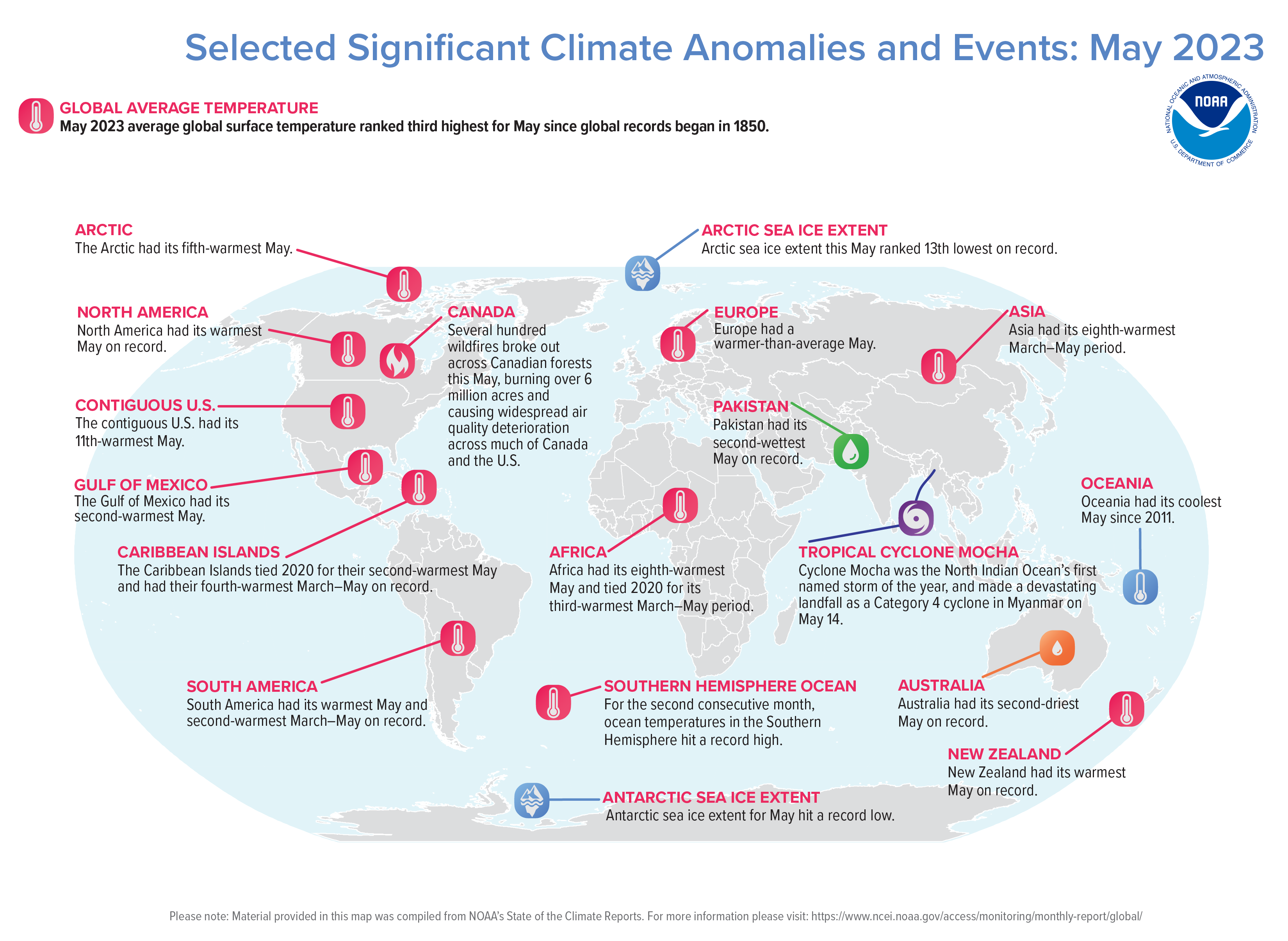
This article originally appeared on noaa.gov
May 2023 was Earth’s third-warmest May on record and North America’s record-warmest May. Global ocean surface temperatures hit a record high for the second month in a row. More information from the global May 2023 climate report is attached below.
It was another warm month for the globe, with May 2023 ranking as the world’s third-warmest May on record.
Earth’s ocean surface temperatures also set a record high for the second month in a row, according to scientists from NOAA’s National Centers for Environmental Information.
Climate by the numbers
May 2023
The average global May temperature was 1.75 degrees F (0.97 of a degree C) above the 20th-century average of 58.6 degrees F (14.8 degrees C), ranking as the third-warmest May in 174 years. May 2023 marked the 47th consecutive May and the 531st consecutive month with temperatures above the 20th-century average.
Looking at continents, both North America and South America had their warmest Mays on record, while Africa, Asia and Europe each had their top-20 warmest Mays. Antarctica had a cooler-than-average May.
For a second month in a row, global ocean surface temperatures set a record high. Weak El Nino conditions emerged as above-average sea surface temperatures strengthened across the equatorial Pacific Ocean, prompting NOAA’s Climate Prediction Center to announce the arrival of El Nino conditions.
Season | Year to date
The March–May period — defined as the Northern Hemisphere’s meteorological spring and the Southern Hemisphere’s meteorological autumn — was also remarkably warm. The Northern Hemisphere’s spring was the third warmest on record at 2.32 degrees F (1.29 degrees C) above average. The Southern Hemisphere’s autumn ranked second warmest on record at 1.49 degrees F (0.83 of a degree C) above average.
The year-to-date (January through May 2023) global surface temperature ranked as the fourth-warmest such period on record, 1.82 degrees F (1.01 degrees C) above the 1901-2000 average of 55.5 degrees F (13.1 degrees C).
According to NCEI’s Global Annual Temperature Rankings Outlook, there is a virtually certain chance (greater than 99.0%) that 2023 will rank among the 10-warmest years on record, and about an 89% chance it will rank among the top five.

Other notable climate events in the report
- Antarctic sea ice hit a record low for May: Globally, May 2023 saw the second-lowest sea ice extent (coverage) on record for the month. Only May 2019 had a smaller global sea ice extent. Last month’s Antarctic sea ice extent ranked lowest on record for May, at 750,000 square miles below average. This was 190,000 square miles below the previous Antarctic record low from May 2019. Arctic sea ice extent for May 2023 ranked 13th smallest in the satellite record, about 40,000 square miles below average.
- May was very active in the tropics: Three named storms occurred across the globe in May, all of which reached major tropical cyclone strength (winds of 111 mph or higher). Two storms reached Category 5 on the Saffir-Simpson Hurricane Wind Scale, with sustained winds of 157 mph or higher. May 2023 tied 2008 and 2015 for the most major hurricanes in May. The global accumulated cyclone energy (called ACE, a metric that indicates the amount of energy released by a tropical cyclone during its lifetime) was the highest on record in May and about 10% higher than the previous record set in 2015.